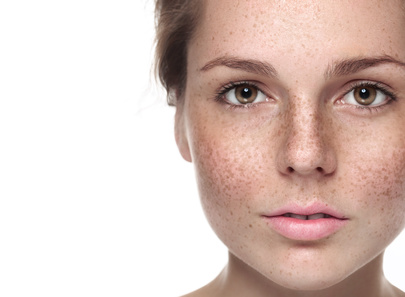
Melasma
Melasma is an acquired mask like facial hyperpigmentation and is commonly observed in Asian middle aged women. In the past, attempts to treat melasma with Q-switched ruby laser or Q-switched Nd-YAG laser yielded disappointing results. Dr. Mei-Ching Lee et al. from Taiwan tried to combine 1,064nm Q-switched Nd-YAG laser with ultrasonic application (1 MHz, 0.5 W/cm2) of topical vitamin C (5 ml of 20 % L-ascorbic acid gel) rather than laser monotherapy alone.
They used 1,064nm Q-switched Nd-YAG laser with the 8-mm spot size, 2.0 J/cm2 for one pass, then shifted to 6-mm spot size, 3.5 J/cm2 for a second pass, and ended with 4-mm spot size, 3.2 J/cm2 scanning mode for the final pass for full face and multiple passes for deep pigmented area until mild erythema and swelling. The improvement was noted more pronounced during second to fourth sessions. The patients’ mean improvement after four sessions was 60–80 % fading of melasma.
Another similar study by Dr. Yu-Tsung Chen used sole (1,064 nm) or dual wave (1,064 nm and 532 nm) Q-switched Nd-YAG lasers (1,064 nm, 7-mm spot size, 1.6–1.8 J/cm2; 532 nm, 3-mm spot size, 0.8–1.0 J/cm2) combined with subsequent vitamin C (20% L-ascorbic acid gel) sonophoresis (1 MHz, 1.2 W/cm2) 5 sessions at monthly intervals to treat facial dyschromia and melasma.
They found over ninety percent of the patients showed an excellent or better outcome and a majority of the patients experienced no post-inflammatory hyperpigmentation (PIH) or had slight PIH which quickly resolved within 1 week. Combinations of laser treatment with vitamin C sonophoresis seemed to reduce the PIH in melasma patient.
[Advertisement] PICOCARE - Manufacturer: WONTECH(www.wtlaser.com)
Successful treatment of melasma by IPL has been reported previously in studies with small sample in Hispanic and Asian persons. In Taiwan, Dr. Chia-Chen Wang et al. performed a study on IPL for the treatment of refractory melasma. A 570 nm cutoff filter was used in the first session, and 590-615 nm filters were used during subsequent sessions.
During all sessions (four sessions at 4-week intervals), they treated patients with fluences of 26-33 J/cm2, double mode, and pulse width of 3-4 and 4-5 msec, respectively, with an interval of 30-35 msec between pulses. They found an average of nearly forty percent improvement in relative melanin index. About one third of patients had more than 50% improvement. However, partial repigmentation was noted despite the use of hydroquinone cream and broad-spectrum sunscreens, indicating long term maintenance sessions are required.
-To be continued














.jpg)






